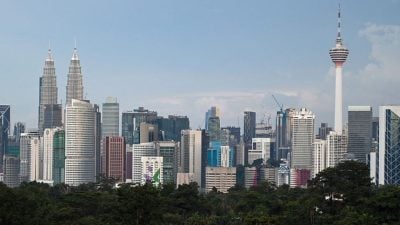Economists have widely argued that Indonesia is currently at risk of a middle-income trap (MIT).
The World Development Report 2024 proposed a three-stage strategy for countries to escape MIT: first, investment, then investment and infusion and finally, investment and innovation.
Without infusion and later innovation, a country cannot sustain economic growth to achieve a high-income status. Infusion and innovation enable firms to improve productivity over time, thus increasing the manufacturing sector’s contribution to gross domestic product (GDP) before an economy structurally shifts to the services sector.
Nevertheless, as history shows, the impact of innovation on the market is never smooth or peaceful. It involves the Schumpeterian idea of creative destruction.
In its original sense, creative destruction is when new entrants introduce innovative products that replace older ones, driving incumbents out of the market.
Innovation might also introduce technology that washes away not only the old product, but also the entire market, creatively replacing it with a new one.
In an extended model, Acemoglu and Cao show that incumbents can also advance market innovation by improving their products, while new entrants focus on more radical innovations.
In short, creative destruction relies on market mechanisms to screen and sort the most innovative firms to enter, and to punish inefficient incumbents by forcing them to exit, creating firm dynamics.
Aghion and Howitt modeled creative destruction as the underlying source of sustained economic growth, in which firm-level innovations significantly influence the broader economy.
Creative destruction is such a fascinating idea that we might wonder whether it applies to the Indonesian economy.
Since 2002, the Indonesian economy has experienced deindustrialization, marked by a decline in the manufacturing sector’s contribution to GDP.
Economists describe this deindustrialization as premature because it began when Indonesia’s gross national income (GNI) per capita was still relatively low ($780).
As a result, the manufacturing sector was unable to serve as an engine of growth to help Indonesia escape the middle-income trap or reach a high-income status of GNI per capita around $14,000.
The lack of investment, innovation, new technology adoption and skilled labor has hindered productivity in firms and thus played a major role in this premature deindustrialization.
In short, fundamental issues in the manufacturing sector are limiting the effects of creative destruction.
Why do Indonesian firms not innovate in the first place?
One possible factor is that the market’s screening and sorting mechanism of more productive entrants is limited and may not work. It can occur when firms face high entry costs into the industry.
As the World Bank Enterprise Survey 2024 shows, 25–29 percent of businesses in Indonesia pay a bribe to obtain an operational permit.

It might also be that the entrants are the ones who have the luxury of a political connection.
These new entrants do not necessarily have to be the most productive or innovative.
While agile and innovative entrants are often small businesses, Indonesia does not have a strong stream of innovative entrepreneurs.
Adding the informal sector to the equation, entrepreneurial activities have limited access to crucial resources like credit and legal protection, which prevents innovation.
Even if small businesses are not productive, they can still be too small to fail because, as Ufuk Akcigit of the University of Chicago once said to me, government policy for small businesses in developing countries is more like social protection than an industrial policy.
Second, although incumbent firms can be the source of innovations, they choose not to do so if they believe that they are protected from market competition.
Once incumbents have patents, they become complacent and stop innovating.
The protection of incumbents can come from the government through policy, regulation or even subsidies.
It might also be that the incumbents are state-owned enterprises that are too big to fail and just enjoy a quiet life. And even if these incumbents are not state-owned, they may still have political connections that protect them when the antitrust agency is ineffective.
These two factors, the distorted entry and the incumbents’ complacency, might inhibit creative destruction.
Alas, there is a third factor that is outside the logic of the creative destruction idea: the productive incumbents are the ones who exit the market.
Why? In the era of economic openness, a productive firm can choose to reallocate its production from one country to another. For example, an electronic assembly company that moves from Indonesia to Vietnam.
An Institute for Economic and Social Research (LPEM) study shows that, for government priority sectors, based on Statistics of Manufacturing Industry from 2000 to 2019, the total productivity of new entrants is relatively low compared to that of incumbents.
There were periods when firms exiting the market were more productive than incumbents, leaving the entire industry’s productivity to fall.
In this case, what happened in Indonesia during this period was not creative destruction but rather a destructive creation.
It is evident that creative destruction requires a robust institutional setup. In Joel Mokyr’s view, a culturally open society, political fragmentation and continuous knowledge creation are necessary in fostering innovations.
While the last is mostly the role of educational institutions, the first two rely on government willingness to foster a flourishing democratic civil society and decentralized political power.
Acemoglu and Robinson showed us that there is a narrow corridor for liberty that is crucial for avoiding becoming a failed nation. Indonesia has long been within this corridor and must stay in it, but to escape the MIT, we must take an even narrower path that only a few nations in recent decades have managed to do.
Yet, while the current government has a vision to achieve high-income status by 2045, I am worried that we risk slowly veering off the narrow corridor.
(Chaikal Nuryakin is director of Institute for Economic and Social Research (LPEM) and an associate professor at University of Indonesia.)
ADVERTISEMENT
ADVERTISEMENT








































